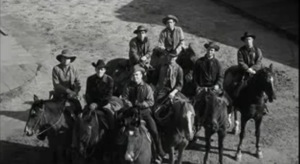Preserving Exemplary American Films
Keeping culturally influential films in good shape is no easy task. It is costly, and can require huge efforts just to track down films that may have become damaged, or have become hard to find – in whole or in bits and pieces.
In a project designed to assure preservation of the highest caliber to a select group of films, 25 American films are admitted each year to the Library of Congress’s National Film Registry.
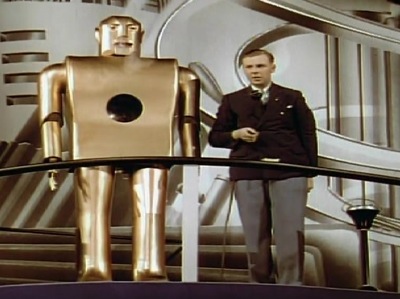
With passage of the National Film Preservation Act of 1988, Congress established the collection to highlight the importance of preserving America’s film heritage.
The Act was passed in response to the rising trend of colorization of classic films, which was gathering pace. Its chief practitioner, and proponent, was media mogul Ted Turner, who announced plans to subject hundreds of MGM, RKO, and Warner Bros. films to the process after buying them to air on his television network. Turner claimed that his project was in response to audience demand – the audience being, presumably, viewers of his cable-television network. Although not the first person to colorize films, he was the first to announce plans to do it en masse.
A Library of Congress Program Ensures the Survival of Exemplary American Films from the Whole History of Motion Pictures
Members of Congress, apparently convinced that majority opinion opposed colorization, passed a bill that “prohibits any person from knowingly distributing or exhibiting to the public a film that has been materially altered, or a black and white film that has been colorized and is included in the Registry, unless such films are labeled disclosing specified information.”
The rationale behind the registry is emphasized each year at the time of the announcement of new additions, and James M. Billington, the Librarian of Congress, did so in December: “These films are not selected as the ‘best’ American films of all time, but rather as works of enduring importance to American culture. They reflect who we are as a people and as a nation.”

The Librarian makes the annual selections to the registry based on recommendations from the National Film Preservation Board. The Board offers its recommendations after reviewing thousands of titles nominated by the public and Library staff. The NFPB was created as a result of the National Film Preservation Act of 1988 and serves as an advisory body to the Librarian of Congress. In 1996, a reauthorization of the Act established the National Film Preservation Foundation, an independent, non-profit charity affiliated with the NFPB which raises private funds to help American archives preserve films and make them publicly available.
Good prints or “elements” (parts) of prints do not exist for every film in the registry, although the chances are better for more recent films. Why should the registry include more recent films, like this year’s selection of the 1999 blockbuster hit, The Matrix? Disasters, such as fires or floods, are always possible, putting even modern films at risk. Master printing elements can become worn or damaged. Tastes may change over time. Business models may change. A blockbuster in 1999 may be fodder for the trash heap in 2099. The likelihood of audiences being able to see today’s films a century from now increases considerable when preserved prints reside within secure archives of the national library.
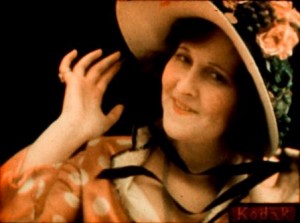
Generally, films donated by the movie studios arrive in new or little-used state, sometimes recently preserved by their owners. But many selected films survive only as poor prints. In those cases, the Library may seek out a number of printing elements to use before undertaking preservation, although such restoration is not the norm. Standard procedure is to locate the best material available, and work with the owners to have the material donated to the Library’s registry collection. “These elements are not touched; they are not circulated or loaned,” generally not even to other archives to duplicate, says Donna Ross, the boards assistant for the NFPB. “They are meant to be masters. They are stored in the best possible conditions, in the best possible cans, and checked regularly for signs of deterioration. Or if they were mastered and donated in digital formats, they are backed up and migrated regularly.”
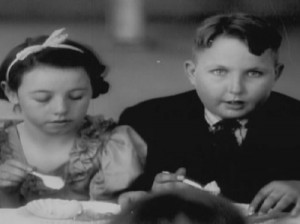
By general agreement, at the time the registry was set up, before the popularity of home video, film studios did not universally do a good job of protecting their assets. They did not always store their material in adequate environmental conditions or keep detailed records of their holdings.
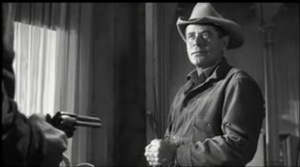
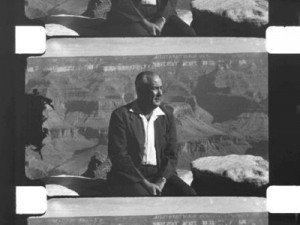
Frequently at risk are “orphan films” – those no longer copyright protected or having commercial value. Also often in jeopardy are independent and avant-garde films – those made by producers other than major studios. They’re often held at smaller institutions whose funding may be less than secure. The Library of Congress works with such holders, too, and sometimes with living filmmakers or surviving family members.
Prints of selected films aren’t much use if no machinery exists to view them. So the Library also keeps a large store of tape decks, flatbed viewers, film printers, projectors, and other machinery that it can cannibalize when parts are needed to repair rare or obsolete equipment used in the preservation process. Technicians who can operate and repair such machinery are also becoming obsolete creating yet another preservation challenge.
Difficulties will only increase with film that is “born digital,” or that is experimental in format as well as content. Born-digital film might appear to be easy to maintain – all you’d need is a computer, surely? No – files and the programs and equipment they were made with must constantly be checked for operability; or, files must constantly be migrated to emerging software and hardware platforms.
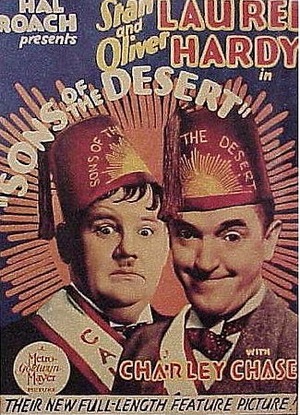
As more and more “films” are made in multi-genre formats that may include elements of installation and even performance, not only will “film” becomes harder to define, but preservation will become more and more challenging.
The registry aims to reflect the geography, ethnography, and cultural variety of the United States. This year for example, as the summaries of selections below illustrates. “We can’t always cover every genre or sub-genre, or demographic group, but we try to make balanced selections,” says Ross.
The registry has plenty of work ahead of it, and worthy titles to collect, says Ross. “We see fantastic collections that are languishing in bad facilities, or are tied up with rights holders. It can be really heartbreaking.”
[Believe a film is worthy of being placed in the registry? Nominate it at the NFPF’s website www.loc.gov/film/. You can check by year and title whether a film has already been added online, and you can also see a list of some films not yet nominated and to which countless films might be added).
– Peter Monaghan
2012 selection includes classics, documentaries, and independent and experimental films
3:10 to Yuma (1957)
Delmer Daves’ innovative 1950s western, based on an Elmore Leonard story, starred Glenn Ford and Van Heflin in roles cast against type. It now looks progressive for its insights into the minds of its two protagonists under pressure. Frankie Laine sang the popular, eponymous theme song.
Anatomy of a Murder (1959)
Otto Preminger’s crime-and-trial film, starring James Stewart, Ben Gazzara, and Lee Remick and shot on Michigan’s Upper Peninsula, frankly addressed adult themes and deployed blunt language. Its drama, suspense, and insights into the legal system endure. It boasts a score by Duke Ellington and a memorable Saul Bass opening title sequence.
The Augustas (1930s-1950s)
A 16-minute silent in which Scott Nixon records his travels as a Augusta, Ga.-based salesman. The avid member of the Amateur Cinema League documented streets, storefronts, and cities named Augusta from Montana to Maine. He arranged his images, shot in black and white on 8mm and 16mm, and drawn from 26,000 feet of film now held at the University of South Carolina, to contrast their august name and the unspectacular nature of small-town, everyday Americana.

n
Born Yesterday (1950)
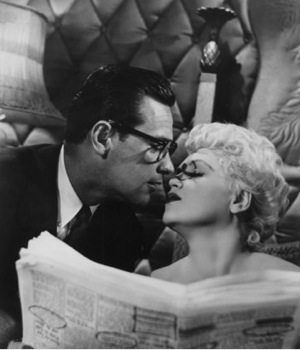 In George Cukor’s enduring comedy classic, based on Garson Kanin’s play, Judy Holliday (in photo to left) is not-so-dumb “dumb blonde” Billie Dawn. A satire on Washington DC corruption, it charmingly and wittily addresses class, gender, social standing, and American politics. It brought Holliday an Academy Award for Best Actress. This trailer tells some of the tale.
In George Cukor’s enduring comedy classic, based on Garson Kanin’s play, Judy Holliday (in photo to left) is not-so-dumb “dumb blonde” Billie Dawn. A satire on Washington DC corruption, it charmingly and wittily addresses class, gender, social standing, and American politics. It brought Holliday an Academy Award for Best Actress. This trailer tells some of the tale.
Breakfast at Tiffany’s (1961)
To get a film made of Truman Capote’s acclaimed bitter novella of self-invented Manhattan call girl Holly Golightly, screenwriter George Axelrod and director Blake Edwards stripped away risqué dialogue, an unhappy ending, and explicit references to Holly’s livelihood. They added romance to create what Capote called “a mawkish valentine to New York City” starring Audrey Hepburn – “just wrong for the part” – rather than his preferred Marilyn Monroe. Audiences have disagreed, including feminist critics who value Hepburn’s compelling intelligence, curiosity, and impetuosity as it belied a knowingly false facade and served as an alternative to the 1950s sultry siren. Acclaimed have been Edwards’ visual gags and skillful navigation of abrupt tone changes, Henry Mancini’s classic “Moon River” featuring Johnny Mercer lyrics – Mancini applauded Hepburn’s wistful guitar rendition.
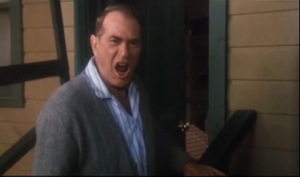 A Christmas Story (1983)
A Christmas Story (1983)
Humorist Jean Shepherd narrates a film based on his 1966 short story collection In God We Trust, All Others Pay Cash which originated on his radio and television programs and relates growing up in 1940s Indiana hoping, for example, for a Red Ryder BB gun for Christmas. Writer-director Bob Clark capped his long-held desire to make a movie of the stories with astute understanding of human nature and expertly realized recreation of nostalgic detail and period flavor. A grinning, cherub-cheeked, oversize-spectacled Peter Billingsley portrays Shepherd as a boy with Darren McGavin and Melinda Dillon as his harried-yet-lovable parents. This trailer gives you a sense of why the fellow on the right looks so exercised.
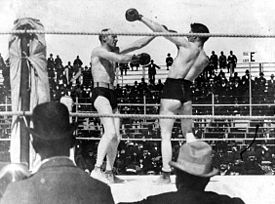 The Corbett-Fitzsimmons Title Fight (1897)
The Corbett-Fitzsimmons Title Fight (1897)
Footage of championship boxing matches, the most popular American sport of the era even though banned in many states, sparked the commercial success of late 19th century movies. This film records a title fight staged in Carson City just after Nevada legalized boxing in 1897. The 100-minute film – the longest of its day – shows introductions of famous personalities and all 14 three-minute rounds and one-minute breaks. Because the fight lasted longer than others on film, it generated $750,000 for the producers and fighters during its several-year distribution. As boxing0film producers commonly did, Corbett-Fitzsimmons’ producers protected against piracy by engineering a film printer and projector of an unusual, proprietary size – in this case, 63mm that had to run on a “Veriscope” projector.
Dirty Harry (1971)
Don Siegel directed rogue cop Harry Callahan (Clint Eastwood) in an action-packed paean to vigilante justice marked. A model for 1970s gritty cop dramas, it made Eastwood’s career and was a top-10 hit. For championing the era’s outcry against suspects’ rights, some critics called it “fascistic”; Eastwood countered that the procedure-disregarding Callahan was “a fantasy character” who “does all the things people would like to do in real life but can’t” and thus put the “rights of the victim” above those of the accused.
Hours for Jerome: Parts 1 and 2 (1980-82)
The title of Nathaniel Dorsky’s silent tone poem evokes the medieval devotional “Book of Hours.” The 45-minute film loosely records the day-to-day life of the filmmaker and his partner as an arrangement of images, energies, and illuminations. Dorsky, whom Film Comment named in 2010 as filmmaker of the decade, specified projection at silent speed (17-20 frames per second instead of the usual 24 for sound film). That, he wrote, “is to strip them of their ability to open the heart and speak properly to their audience. Not only is the specific use of time violated, but the flickering threshold of cinema’s illusion—a major player in these works—is obscured.”
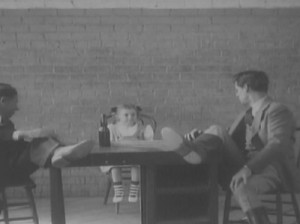
Dallas native Melton Barker spent three decades traveling through southern and central U.S. making two-reel films in which children acted, sang, and danced in variants of his “The Kidnappers Foil.” He offered cheap acting lessons to children and then had mobs of them – ages 3 to 12 – act in his melodrama about a girl kidnapped from her birthday party and rescued by kids whom townsfolk rewarded with a party where the kids showcased their musical talents. Barker then cashed in on screenings of each 15- to 20-minute film. Most prints have disappeared, but some have turned up in vintage movie houses or local historical societies. The Texas Archive of the Moving Image has a collection and hosts Internet resources for their long-ago actors.
Kodachrome Color Motion Picture Tests (1922)
 Under the direction of Kodak scientist John Capstaff, Paragon Studios in Fort Lee, New Jersey, produced this green-blue and red demonstration reel to showcase the complex Kodachrome color process. It featured leading actresses posing and miming in colorful high fashion. One wore costumes from The Light in the Dark, the first commercial feature to incorporate Kodachrome takes.
Under the direction of Kodak scientist John Capstaff, Paragon Studios in Fort Lee, New Jersey, produced this green-blue and red demonstration reel to showcase the complex Kodachrome color process. It featured leading actresses posing and miming in colorful high fashion. One wore costumes from The Light in the Dark, the first commercial feature to incorporate Kodachrome takes.
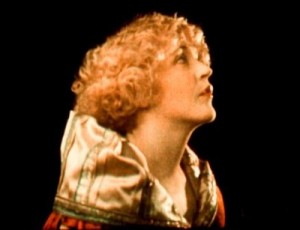
A League of Their Own (1992)
Director Penny Marshall used the real-life All-American Girls Professional Baseball League (1943-1954) as a backdrop for her heartfelt comedy-drama, whose ensemble cast includes Geena Davis, Tom Hanks, Madonna, and Rosie O’Donnell. Through an little known episode in American sports history, the film examines women’s changing roles during wartime.
The Matrix (1999)
The complex science-fiction, man-against-machine blockbuster boasted advanced special effects, production design, and computer-generated animation as it told a story steeped in mythological, literary, and philosophical allusions. In depicting a revolt against a conspiratorial regime, it drew on the visual style of Hong Kong action films and Japanese anime films. Directors Andy and Lana Wachowski and visual effects supervisor John Gaeta (whose efforts won him an Academy Award) altered sci-fi filmmaking practices with innovative digital techniques that turbo-boosted action sequences. They exploited a digitally enhanced simulation of variable-speed cinematography to control time and movement within images.
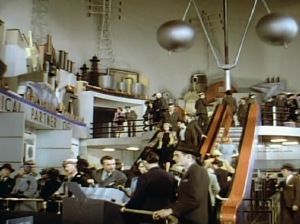
Produced by Westinghouse for the 1939 World’s Fair, industrial film is a striking, moralistic hour-long time capsule of that historic event. The Technicolor film follows a fictional Indiana family that ventures from grandma’s quaint Long Island home to the fair’s popular pavilions. As the family enjoys the futuristic technologies in the Westinghouse Pavilion (including newfangled “television”), daughter Babs (a young Marjorie Lord) sours on her foreign-born, anti-capitalistic boyfriend in favor of a hometown electrical engineer fair-worker.
One Survivor Remembers (1995)
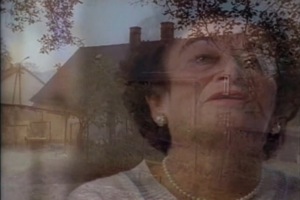 In Kary Antholis’s Academy Award-winning documentary short, Holocaust survivor Gerda Weissmann Klein recounts the six-year ordeal that began when, at 16, Nazi troops invaded Poland. Her whole family were sent to concentration and slave labor camps; only she survived. Antholis mixed film of key locations of Klein’s story with interviews and personal photographs, and considers how her experience shaped the rest of her life. Its simple, powerful eloquence “approaches poetry,” said the Chicago Tribune.
In Kary Antholis’s Academy Award-winning documentary short, Holocaust survivor Gerda Weissmann Klein recounts the six-year ordeal that began when, at 16, Nazi troops invaded Poland. Her whole family were sent to concentration and slave labor camps; only she survived. Antholis mixed film of key locations of Klein’s story with interviews and personal photographs, and considers how her experience shaped the rest of her life. Its simple, powerful eloquence “approaches poetry,” said the Chicago Tribune.
Parable (1964)
Little remarked by film history, 1930s Protestant groups made non-theatrical films that offered gospel-inspired alternatives to sinful Hollywood. Parable, one of the most acclaimed, debuted at the Protestant and Orthodox Center at the 1964 New York World’s Fair. Without dialogue or subtitles, it relied on music and allegory to represent the “Circus as the World,” in the words of Rolf Forsberg, who wrote and directed with Tom Rook. Their film depicts Jesus as an enigmatic, chalk-white, skull-capped circus clown who takes on the sufferings of oppressed workers, women, and minorities. Fair president Robert Moses tried to exclude it; some fair organizers resigned; one minister threatened to blast screenings with a shotgun. But viewers overwhelmingly voted to keep the Fellini- and Bergman-inspired film running as one of the fair’s most popular attractions. Newsweek proclaimed it “very probably the best film at the fair.” It received the 1966 Religious Film Award of the National Catholic Theatre Conference, and honors at Cannes, Venice, and Edinburgh film festivals before becoming popular in both liberal and conservative churches.
Director Rolf Forsberg discusses the controversy that met his film:
n
Samsara: Death and Rebirth in Cambodia (1990)
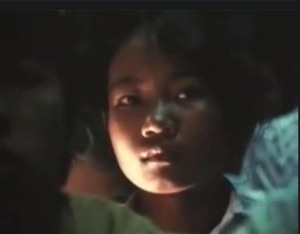 International relief worker Ellen Bruno’s Stanford University master’s thesis documents Cambodians’ struggle to rebuild their shattered society after Pol Pot’s killing fields. “Samsara,” a Sanskrit term meaning “circle” or “wheel,” is commonly translated as “cycle of existence.” Bruno used ancient Buddhist teachings and folklore in his poetic, heartbreaking film, which brought a humanistic perspective to the political chaos of Southeast Asia. He intertwined mundane and spiritual Khmer life. One reviewer reflected: “The meditative pacing, the rhythm of bells and chimes, the luxuriant green landscape, the otherworldly response to horrific recent history—I was transported.”
International relief worker Ellen Bruno’s Stanford University master’s thesis documents Cambodians’ struggle to rebuild their shattered society after Pol Pot’s killing fields. “Samsara,” a Sanskrit term meaning “circle” or “wheel,” is commonly translated as “cycle of existence.” Bruno used ancient Buddhist teachings and folklore in his poetic, heartbreaking film, which brought a humanistic perspective to the political chaos of Southeast Asia. He intertwined mundane and spiritual Khmer life. One reviewer reflected: “The meditative pacing, the rhythm of bells and chimes, the luxuriant green landscape, the otherworldly response to horrific recent history—I was transported.”
Slacker (1991)
A touchstone in the blossoming of American independent cinema during the 1990s, this free-floating narrative film follows an engaging assortment of characters in Austin, Texas, through a single day of rumination on UFOs, Scooby Doo, Leon Czolgosz, and much else. Shot on 16mm film with a budget of $23,000, director Richard Linklater dispensed with a structured plot in favor of interconnected vignettes and created a charmingly quirky film that has influenced a generation of independent filmmakers.
Sons of the Desert (1933)
Stan Laurel, Oliver Hardy, and Charley Chase star in this riotous Hal Roach Studios comedy of fraternity and marital mishaps. Veteran comedy director William A. Seiter incorporated many Laurel & Hardy short-subject comedic effects into the feature-length film, the duo’s finest, which rose to the box-office top 10.
The Spook Who Sat by the Door (1973)
When restored for DVD in 2004, the New York Times called this film “a story of black insurrection too strong for 1973.” Based on Sam Greenlee’s controversial 1969 best-seller and with a subtle jazz score by Herbie Hancock, it depicts a black man who, after being hired to integrate the CIA, turns his counter-revolutionary training to black-nationalist revolution on American streets. Responding to criticism that it sanctioned violence, United Artists pulled it after a successful three-week theater run. But the Washington Post’s Adrienne Manns, a black-student-movement veteran, said it “lends humanity to persons who are usually portrayed as vicious, savage, sub-humans” for terrorizing their own communities. Director Ivan Dixon, known for roles in “Hogan’s Heroes” and as the lead in Nothing But a Man (1964), believed it offered no “real solution” to racial injustice, but projected “a fantasy that everybody felt, every black male particularly.”
n
http://www.youtube.com/watch?v=q0j424uA9uE&feature=player_embedded
n
They Call It Pro Football (1966)
This “Citizen Kane of sports movies” surpassed the highlight-reel, oom-pah-marching-band football films that had preceded it. In 1964, NFL commissioner Pete Rozelle, with his public-relation background, agreed to the formation of NFL Films as a medium for boosting the league through TV mystique. They Call It Pro Football, NFL Films’ first feature, cast the game in dramaturgical terms – as struggle, not merely outcome. Writer-producer Steve Sabol and director John Hentz, with commanding narrator John Facenda and composer Sam Spence, deployed telephoto lenses, slow motion, and sweeping ground-to-sky shots to cast players as heroic and the games as surprisingly intricate and graceful. They miked coaches and players to let their audience in on strategy and emotion. An NFL Films article about They Call It Pro Football includes a video about the making of the film.
The Times of Harvey Milk (1984)
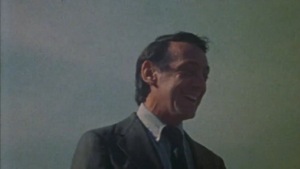
Two-Lane Blacktop (1971)
After the success of 1960s youth-oriented films like Bonnie and Clyde, The Graduate, and especially Easy Rider, Hollywood executives threw money at a spate of innovative low-budget films by “New Hollywood” innovators who embraced the visions of playwright Samuel Beckett and European filmmakers Robert Bresson, Jacques Rivette, and Michelangelo Antonioni. The minimalist classic Two-Lane Blacktop follows two obsessed but laconic young drivers of a souped-up 1955 Chevy (singer James Taylor and Beach Boys drummer Dennis Wilson) as they cross-country race a 1970 Pontiac GTO driven by a loquacious, middle-aged, self-reinventing driver (Warren Oates). A 17-year-old drifter (Laurie Bird) joins them and disrupts their masculine world of speed, mastery, and competition. Director Monte Hellman and screenwriter Rudolph Wurlitzer unfold spare landscapes, car-culture rituals, and existential encounters to reflect on the myth of road-life freedom.
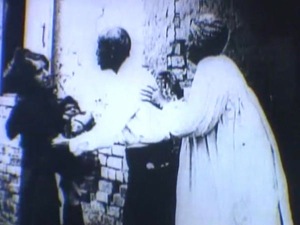 Uncle Tom’s Cabin (1914)
Uncle Tom’s Cabin (1914)
Harriet Beecher Stowe’s 1852 anti-slavery novel was adapted for the stage in 1853 and continuously performed in the U.S. well into the 20th century. It was often adapted to movies after 1900, but always with white lead actors until this version, believed to be the first American feature film with a black lead. Actor, musician, singer, and songwriter Sam Lucas had won fame for vaudeville and minstrel shows produced by Charles Frohman whose breakthrough 1878 stage version of Uncle Tom’s Cabin featured Lucas as lead; 36 years later, the World Producing Corp lured Lucas out of retirement to recreate the role on film and to set an important milestone in American movie history.
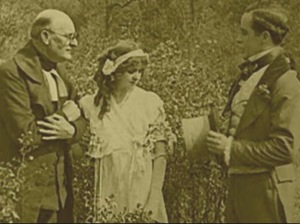
Director Maurice Tourneur – “one of the men who introduced visual beauty to the American screen,” according to film historian Kevin Brownlow – arrived in America in 1914 after working as an assistant to sculptor Auguste Rodin and painter Pierre Puvis de Chavannes), and winning notice as an actor and innovative director in French theater and cinema. The Wishing Ring, his third American film, was admired for its lighting, cross-class romantic story, and “Old England” settings shot in New Jersey. Silent-cinema historians have lionized it for the sophistication of its camerawork, lighting, and editing. One, Richard Koszarski, called it “probably the high point of American cinema up to that time.” It was believed lost until Brownlow located a 16mm print in northern England. The Library of Congress copied it to 35mm with a National Endowment for the Arts film-preservation grant.
– Article by Peter Monaghan; film descriptions adapted from Library of Congress National Film Registry release

